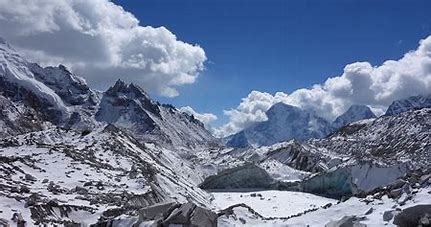Climbing Mount Everest has always been a significant challenge, but new research suggests that this iconic peak may be getting even taller. Scientists have found that Everest is experiencing a growth spurt, adding to its already impressive height of 8,849 meters (29,032 feet).
The Formation of the Himalayas
The Himalayas were formed around 50 million years ago when the Indian subcontinent collided with the Eurasian tectonic plate. Although this collision created the towering mountains, recent studies indicate that parts of these plates were already high before the impact. The mountain range continues to rise, but processes like landslides also mean some rock is lost.
Erosion and Growth
Researchers have discovered that Everest has risen an additional 15 to 50 meters over the last 89,000 years due to erosion caused by neighboring rivers. This ongoing uplift is influenced by geological processes that can affect a mountain’s height over relatively short geological periods.
Prof. Jingen Dai, a co-author of the study from China University of Geosciences, explained, “Even the world’s highest peak is subject to ongoing geological processes that can measurably affect its height.”
Understanding River Capture
The study, published in Nature Geoscience, utilized computer models to explore the evolution of river networks in the Himalayas. About 89,000 years ago, the upper reach of the Arun River merged with its lower reach due to erosion. This “river capture” led to increased erosion near Everest and the formation of the Arun River gorge.
Dr. Matthew Fox, co-author from University College London, noted that the increased flow of water in the Arun River allowed for more sediment transportation and bedrock erosion. This reduction in weight on the Earth’s crust initiated a process known as isostatic rebound, which is pushing Everest upward.
Current Uplift Estimates
The research estimates that Everest is rising by about 0.16mm to 0.53mm per year due to these processes, with neighboring peaks like Lhotse and Makalu also experiencing similar uplifts.
Future of Everest’s Height
While the growth of Everest is exciting, Prof. Dai cautions that this uplift will not continue indefinitely. The process will reach a new equilibrium once the river system stabilizes.
Broader Implications of the Study
Prof. Mikaël Attal from the University of Edinburgh remarked that the study highlights how river capture can significantly impact the Earth’s surface. Other factors, such as tectonic stresses from earthquakes and the loss of mountain glaciers, also contribute to the unusual heights of the Himalayas.
Dr. Elizabeth Dingle from Durham University emphasized that the findings could have implications beyond Everest, suggesting that similar effects could be present in other tectonically active mountain ranges.
Conclusion
As research continues to uncover the complexities of geological processes, Mount Everest remains a fascinating subject of study, revealing insights not only into its towering heights but also into the dynamic nature of our planet.







